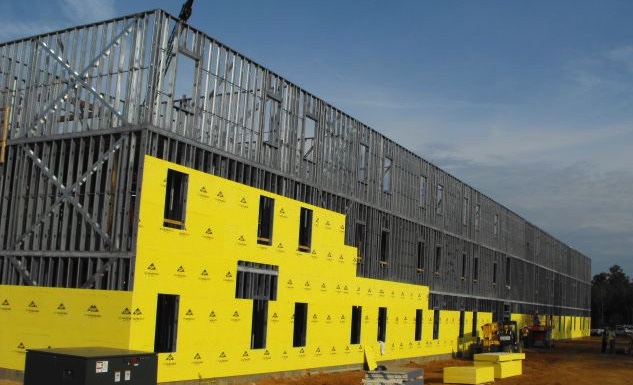Resilience and Strength

Steel is a major and essential construction material, offering unique value and unmatched performance. As one of the most resilient construction materials today, steel has the ability to absorb and recover from external shock such as; vibration or bounciness, horizontal sway, as well as serviceability concerns. The versatility and resilience of steel lends large amounts of freedom to achieve ambitious designs, and provides contractors with a highly engineered, high-quality building material. Building professionals choose steel for use in everything from industrial to iconic structures for its resilience, strength, versatility and elasticity, coupled with its non-combustibility and resistance to decomposition.
- Steel’s durability, non-combustibility and strength make it an inherently resilient design material, with “resilience” defined as a structure’s ability to meet extreme natural and man-made challenges with minimal disruption to occupants and functions. These properties, along with adaptability and durability also make steel a cost-effective choice for the full life cycle of a building.
- Steel is a resilient, non-combustible material, with reserve strength and ductility that result in significant advantages in natural disasters such as hurricanes and earthquakes and in other extreme events like fire and blast. With consistent chemical and mechanical properties, steel behaves in a predictable manner when subjected to the structural loads imposed by high wind and seismic events.
- Unfortunately, termites are costly to the economy and the environment, causing more damage to structures than fire, floods and storms combined, and this damage is rarely covered by insurance. Fortunately, steel is not vulnerable to termites since it is inorganic, and unlike wood, does not provide termites with a food source. As a result, steel is one of the recognized methods for compliance with the termite resistant construction requirements of the International Residential Code.
- Steel construction utilizes secure connections and reliable fastening technologies such as welds, bolts and screws for additional strength and to accommodate unanticipated tension forces and prevent disproportionate collapse.
